I Played Two Games Popular In The Creepypasta Reddit Community To See If Their Reputations Were Warranted
By ZombiePie 7 Comments
I Let Reddit Inform Two Of My Video Game Choices in 2023
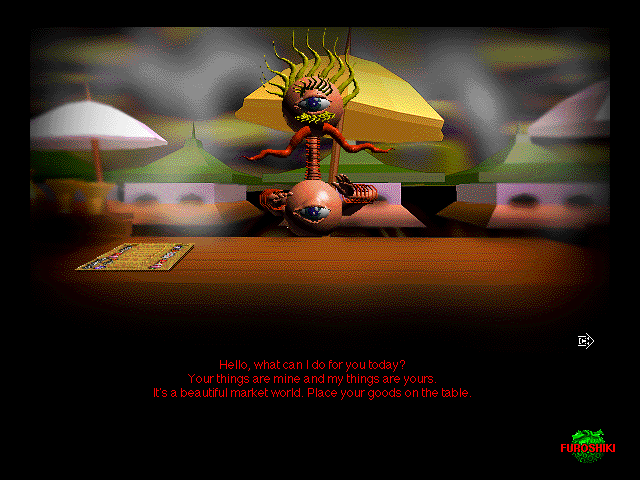
Let's address the skeleton in the closet before discussing a feverish and bizarre video game. Since college, I have been an almost daily user of Reddit. Now, before you ask for my username or aim to use this to discredit everything I have contributed to this site, a few disclaimers are worth mentioning. First, I am not now, nor ever have been, a user of the Giant Bomb Reddit. I might be a nightmare, but I'm not an outright monster. Second, I use Reddit for its foundational purposes: networking with worldwide communities for obscure or lesser-known hobbies and general news aggregation. I do not engage in backdoor trolling or harassment of vulnerable social groups, nor do I engage in anything related to video games or Giant Bomb when I use Reddit. The latter of those facts is why I have kept this account concealed from everyone I know on Giant Bomb. Certain parts of my daily goings-on are for my sake, and that's all that honestly needs to be said about the matter.
However, sometimes I dabble in the sectors of Reddit I should know better not to, and the subject of today's blog is one such case. As the title might suggest, I ended up in the video game-themed section of the Creepypasta portal of Reddit. To come clean, I was minutes away from filing an "I need help figuring out this game and only have a superficial recollection of it to go by" request and recalled I learned about the game from a Creepypasta I read during my college years. After running a keyword search, I found the post and figured out I was thinking of LSD. However, when I dug deeper, I discovered two things about LSD: Dream Emulator I had not known when playing a ROM rip of it years ago. Foremost, I found the lead designer was named Osamu Sato. Connected, Sato had at least one other game under his name, Eastern Mind: The Lost Souls of Tong Nou, that sounded right up my alley in terms of being some adventure game goodness I would be interested in covering. And boy, did that game deliver! On only a handful of occasions, I played an adventure game recommended to me and said to myself, "HOT DAMN! I sure need to write about this game," but Eastern Mind is one such example. LSD, on the other hand, didn't scratch that same itch, but that's something I will discuss in a little bit.
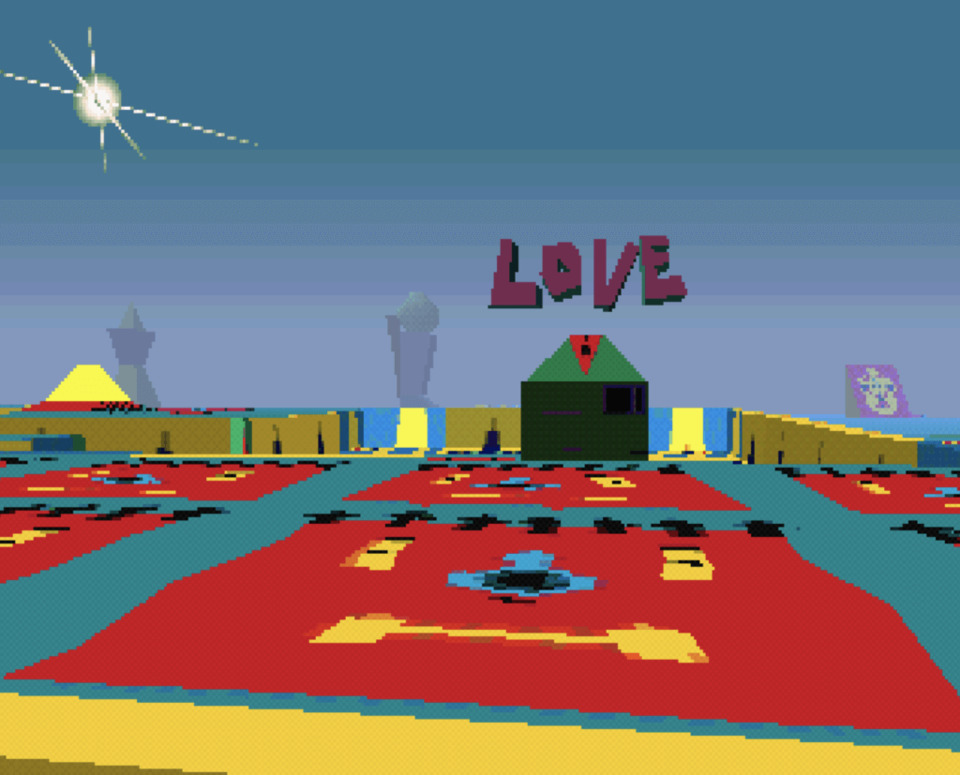
The second and more shocking fact is that there is a SIGNIFICANT internet community that treats LSD and Eastern Mind like video game analogs of the Dead Sea Scrolls or the teachings of Muhammad. Seriously, check out the Fandom wiki dedicated to JUST LSD and be AMAZED at how every level, NPC, and pixel has been analyzed in what I can only describe as a joint exercise by a small but active sub-community. On the one hand, I LOVE seeing people in the gaming hobby coming together in a proactive and non-hostile manner, like in this case. Therefore, I don't want what I am about to say to seem as if I am admonishing this community. However, the theory-mongering rampant with the LSD fanbase reminds me of the people claiming that Stanley Kubrick was trying to warn us about the New World Order in The Shining. Osamu Sato advertised LSD as a multimedia interpretation of another co-worker's dream journal, which in and of itself, is incomprehensible. It's a video game adaptation of a Japanese Voynich Manuscript. In my book, trying to claim LSD is anything more than that should be equated with glorified navel-gazing. However, there's a chance this blog is the first time you have heard of Sato or Eastern Mind, and in that case, a short history lesson might be necessary before we jump into the game I want to discuss.
Let's Talk About Osamu Sato And LSD: Dream Emulator
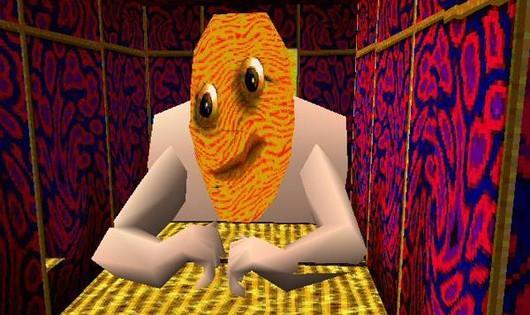
I'm going to warn you right now; I'm not a massive fan of LSD or the cult following it has developed in the years following its release. Regardless, let's not throw the baby out with the bathwater because Osamu Sato is a figurehead worth exploring. Sato is a polymath; his formal education prepared him for digital art, photography, and music composition. His informal training highlights the primary reason his games are as unorthodox and experimental as they are. Everything he touches tries to merge an assortment of his interests and areas of expertise into a single package. It's worth mentioning the peak of his popularity coincides with the rise of multimedia video game experiences. As a result, a door was wide open for him to pitch weird shit to companies like Sony Imagesoft or Asmik Ace Entertainment, and they were willing to foot the bill to make his projects happen. Eastern Mind predates D, but Sato and Kenji Eno are essentially cut from the same cloth. Fun fact, Eastern Mind got a proper Western release and English localization thanks to Sony Imagesoft, the North American video game branch of Sony, before Sony Interactive Entertainment America (i.e., SCEA). Sony Music Entertainment Japan produced the original game, but it is undoubtedly wild to think the game got the green light from suits in Sony to obtain a worldwide release. Also, while the internet might want to convince you Eastern Mind's sequel, Chu-Teng, was "lost media" until recently, they are full of shit. That is a myth the creepypasta community came up with for unknown reasons. Chu-Teng saw a limited release domestically in Japan and nowhere else, and there's no real conspiracy on why that's the case. Eastern Mind wasn't a prominent seller, and the novelty of multimedia video games was starting to wear by the time Chu-Teng was released. Also, when Chu-Teng came out, SCEA was entirely devoted to supporting the PS1, so Sato's Western localization contacts were unavailable.
For LSD: Dream Emulator, Sato relocated from Sony Music to Asmik Ace, a smaller but multimedia-focused outfit that, in the 90s, produced music, films, and video games. At the time, this label did everything from porting the original Civilization to the SNES and Saturn and distributing DreamWorks Animation films in Japan. Asmik exists to this day, but in a reduced capacity; they rarely dabble in producing original video game projects and are a wholly owned subsidiary. In 1998, Asmik had two things they were well-known for: 1) making Virtual Pro Wrestling and 2) funding weird Japanese arthouse shit. As the story goes, Sato had a small financial cushion after Eastern Mind but was skeptical about making another video game. However, after playing an arcade racing game, he got the idea of making a racing game that let players explore multiple dimensions. While experimenting with this idea, Sato struggled with this game and felt like his prototypes lacked the creative spirit that defined his earlier projects. Luckily for him, a fellow employee at Asmik published a dream diary they had been working on for over a decade, and that served as Sato's muse for LSD. If you are interested, the dream diary has been scanned onto YouTube and is an interesting, but HIGHLY NSFW read.

Before you read ANYTHING the internet has to say about LSD, let's get some core facts about it out of the way. It is an exploration game told through the first-person perspective and features an assortment of pseudo-randomly generated environments. Most "dreams" are pulled from a static list, but what one experiences in each playthrough, or even the order of the levels, is randomized. The environments you encounter are strung together willy-nilly, and you can explore alternative environments by moving into objects or things. Each level lasts ten minutes, but you can end your dreams prematurely if you interact with specific violent or aggressive NPCs or objects. As you interact with the game, it occasionally generates short movies that showcase weird visuals and tell odd parables or life lessons instead of dishing out a new level. Then, there's the Gray Man or Shadow Man, who is the closest thing the game has to a recurring antagonist. If you touch this villain, he resets your current dream progress and acts like the ghost in Spelunky. If everything I am describing sounds like the most scattershot arthouse nonsense, that's because it is. LSD is rightfully considered one of the most experimental games ever made, and I'd be hard-pressed to object to that part of its reputation.
After reading articles from Kill Screen calling LSD "one of the most unnerving and unpredictable weird video games ever made" and consulting the game's TVTropes page, which made it seem like it wages psychological warfare on its player, my interest was piqued. What I got instead, after playing the game for nearly seven hours, was a deep sense of disappointment. One could argue that expecting a traditional video game from Osamu Sato is a fool's errand. The man makes weird virtual sandboxes for you to revel in and discern Buddhist-inspired life lessons. My issue with LSD is that it is a mechanically limiting experience, and as such, I don't buy into any fan theories surrounding the game. Any claims that there's something special about it that warrants micro-analyzing it, like Joyce's "Finnegans Wake," or that Sato is being academically transparent about there being a "greater message" in the first place, always fall flat when I read them. When I ran into a rock and went from a Japanese village to a metropolis and died when a car ran into me, I didn't feel like the game was delivering on the haunting, uncanny experience everyone told me it would. Instead, it felt like a random visual generator wherein random shit would happen, and I had to deal with that.

While I played LSD, I felt like my response to its varying stimuli was the same. When my screen filled with static before the sudden end of a dream, I said, "Well, that sure did happen." When I died in the city, and the dream chart described my end experience as "A Downer," I replied, "Alright, and your point is?" And every time I ran into the legendary "Grey Man," I wasn't left shivering in fear. No, the evil hooded figure that is the source of many a creepypasta and online essay is a complete annoyance more than anything else. He's a pest that wipes out all of your progress on whatever level you're on, and in a game that is trying to capture the fleeting and psychedelic nature of human dreams, having this very video game-like mechanic rear its ugly head on you is awkward and frustrating. Likewise, by the time I neared the end of my playtime with LSD, the Grey Man's increasing presence signaled something that I thought was pretty obvious some on the internet apparently have failed to grasp. The Grey Man constantly popping up in LSD's late game is a flag that you have reached the point when the game has run out of new ideas, quotes, and visuals to show you. There are only so many random permutations the game can provide, and having a walking reset button chasing after you prevents you from immediately realizing that post-haste. Similarly, the cinematics are fun the first time, but after about hour five, I started noticing the base parts the game was allowed to work with and felt like I could see the haphazard stitching keeping the game together.
The Start Of Eastern Mind Is The Best Part
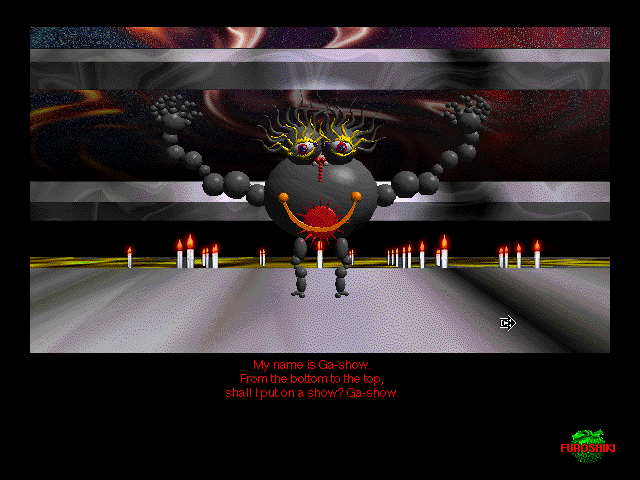
But what about Eastern Mind, the other game from Sato I played, thanks to Reddit? Well, I think I enjoyed Eastern Mind more than LSD, but only because my expectations of it were lower, and it had more of the expected conventions of a video game. Don't get me wrong; Eastern Mind is an utterly bizarre experience with a barely coherent story to boot. The game starts with two crude paper-doll figures laying the basis for its story. You control a young man whose soul has been stolen and journeys to the legendary island, Tong-Nou, where he believes a monster has eaten it. The protagonist discovers the island is the head of a different monster that is depicted as a giant green human-like face. While initially exploring the island, you encounter the five areas that the game uses and the myriad of monsters that populate those realms. This opening chapter is essentially a sandbox that allows the player to explore the game and its inhabitants without any time limit or structural constraints.
As the title of this section might suggest, this opening chapter, where the game functions like a travelogue, is the best part. The game provides a massive brochure you can consult whenever you meet a new creature in Tong-Nou. Meeting every monster before the story kicks into gear is a genuine challenge with an almost Pokémon Snap-like appeal. While the world of Tong-Nou might sound creepy or frightening, what with this being the place where monsters eat the souls of humans, there are not that many places or things that you need to worry about murdering you. As such, you can largely explore the maze-like world that stands before you without fear of reprisal. Getting lost is actively encouraged because hidden objects scattered throughout the game can aid in specific parts of the story. Those items, by the way, are the first portion of the game that rubbed me the wrong way. Some of them, like a goat's gullet, are meant to prevent the player from dying in particular circumstances. Worse, items like a translator make an alien lettering script readable, and if you fail to pick it up, the puzzles the thing is connected to become impossible.
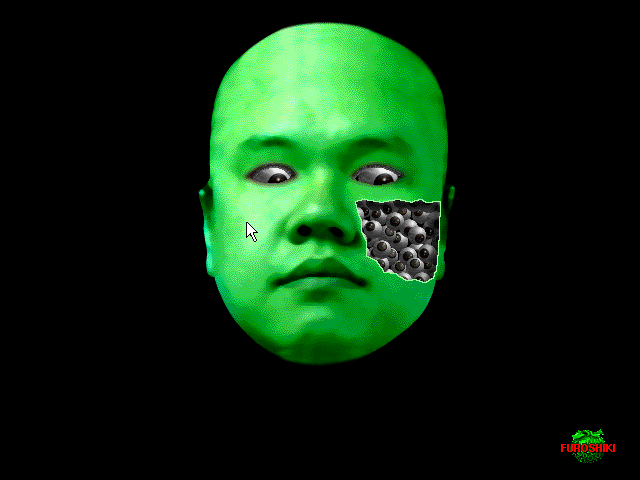
When you have had your fill of exploring the game's world and denizens, its two most pressing shortcomings reveal themselves. Foremost, Eastern Mind doesn't tell you shit. For some, its freeform structure dovetails into its zanier sensibilities. However, even when quest givers tell you exactly where you need to go or what you need to do, the lack of any in-game signposting makes large swaths of it feel like searching for a needle in a haystack. Worse, and this leads to the second problem, its attempts to translate the pre-rendered backgrounds of Myst into a multimedia lesson on soul transmigration lead to many environments where it is IMPOSSIBLE to establish your current location. There are so many times when the game plops you in a circular 3D pre-rendered environment, and you need to explore desolate wastelands in search of a single trinket. In those cases, the repeating nature of the background textures makes your missions only completable if you follow a guide. There's a temple on the top of an ice-covered mountain, and every door and wall in that temple looks exactly like the previous one. Therefore, when the game asks you to find a specific room, it feels like a taller task than it should. Likewise, with so many of the game's missions being simple fetch quests, the lack of ANY quest log, when the game already has an encyclopedia, feels downright unconscionable.
The Second Act Of Eastern Mind: Made Me Want To Puke
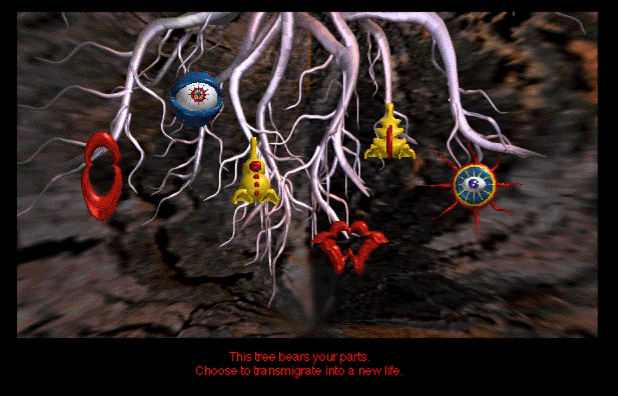
Let's now jump into when Eastern Mind becomes Eastern Mind. While you can explore the game's world without limits for as much as you want, there comes the point when you learn that the only way to progress the game's story is to die. Because this fever dream of a game is based on Sato wanting to reinterpret the Buddhist notions of soul transmigration, you have to get in on that spiritual Karmic wheel if you want to move forward. It's an exciting premise, but one the game only partially delivers upon as you struggle with its incredibly anti-player game design. The first annoying issue is that there are not that many ways to kill yourself, and the game even gives you an item that revives you after your first death. Therefore, you need to die TWICE to trigger the story's second chapter. Furthermore, the game does not tell you this; instead, you only discover this to be the case AFTER your second in-game death. Likewise, even if playing a fever dream version of the core tenets of Buddhism sounds appealing to you, the game is barely a partial success there. Most of the characters that jump in front of you say something entirely unrelated to what you are doing and then cease adding anything new to the game's mood or tone. It's not as if your interactions with the world around you are building towards a coherent gestalt. Unexpected shit happens, and you must have the mental and emotional fortitude to get through those random occurrences if you want to see the game's ending.
Nonetheless, when you pull off this feat, Eastern Mind cuts the shit and delights with some of its most iconic visuals. The current leader of the island of Tong-Nou reveals that they have been eating human souls for shits and giggles since the previous king was put into a crystalline state. The gluttonous pretender promises to hand your character's soul back after they perform a series of nine tasks in which you reenact previous failed attempts to revive the sleeping king. First, you need to make the bodies of these unfortunate individuals by using a machine that puts together the features of a face, and the game doesn't keep track of which facial combinations you have done or not; that's on you. The level of interactivity you have with each character ranges a wide gamut. Four of the nine vignettes take place in linear missions or are self-contained cinematics where you don't need to lift a finger. In one such example, all you need to do to watch the vignette's conclusion is look left and right while stuck on a wall until someone murders you.
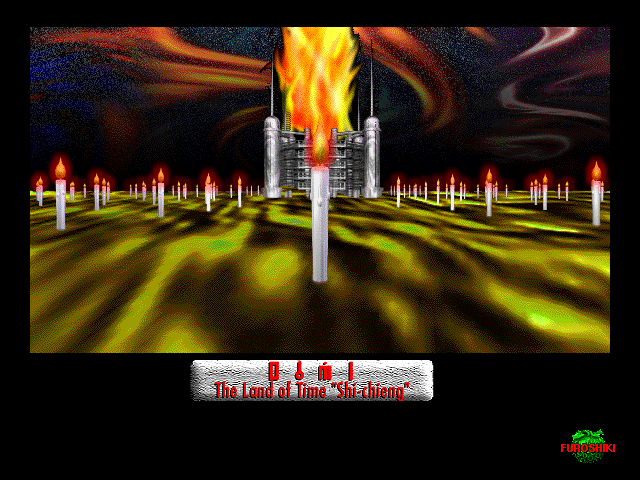
Unfortunately, those limited missions were the highlight of the second chapter for me. I wanted to eat out my eyeballs for the more involved set pieces or sequences. Hopefully, with the handful of screencaps I have provided in this blog, you can tell that parsing what you are looking at takes a lot of work. However, the real difficulty is interpreting the game's riddles and turning them into actionable inputs that move things forward. To highlight, let me weave a tale of what I would describe as the worst journey you need to reenact in Tong-Nou, and that's for the musician named Sha. For this gremlin, you discover they were once a famous musician and will need to gather various musical instruments to free their soul. To collect the first of these instruments, you need to explore the "Land of Desire," take note of two gold pillars, and figure out that they can be moved. These pillars exist in a room with over a dozen similar-looking ones, and there's nothing to direct you toward the "correct" movable posts. The game genuinely wants you to search and peck and doesn't even have the courtesy of hinting the pillars are the key to finding the first instrument. Next, you apply a golden flower on a mummified corpse to reanimate it and learn the Enchanted Drum is in the "Land of Time." To find this, you need to locate a flight of stairs that, trust me, you get tired of after the first hour of the game. However, the enchanted drum is located on a random portion of the stairs. The only way you can discover this drum is to walk up and down the entire matrix and wait for a musical cue to play. When that happens, you need to shake a set of bells to make the drums appear because they are invisible by default. Now, imagine that kind of anti-player game design, but for two more instruments.

The Third And Final Act Of Eastern Mind Was The Weirdest Part
If it were not for how poorly the middle act of the game plays, I would feel more compelled to tell everyone reading this blog to stomach the pain to see its final chapter. After wrapping things up with the other souls, the gluttonous pretender king challenges your avatar to claim their soul. They also say you have a limited amount of time to accomplish this act, but from what I read, that's a fib, and you can take as long as you want. The first part of this task involves backtracking through every single level and screen in the game and finding symbols on the ground that reveal themselves as magical magatamas. Some of these you already have, but that depends on your actions during the first two chapters, but in all likelihood, you need to wander the same realms of Tong-Nou AGAIN in hopes of picking up random shit from the ground. It wasn't fun the first time the game asked you to do this, and it isn't fun the fourth or fifth time. If you check out my Let's Play of this game, you'll notice I was so exhausted with needing to do this that I had a friend read me the directional inputs for the last two remaining magatamas.
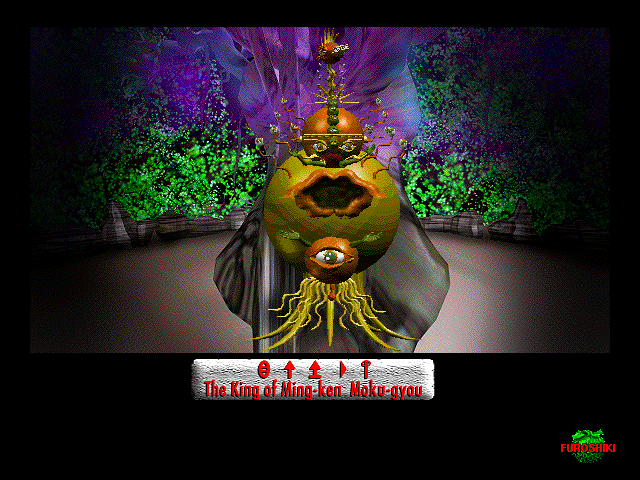
However, the game shines when you unlock the ability to enter a legendary tower containing a katana that can release the real king of Tong-Nou. While you journey up and down this tower, the game presents you with temptations meant to end your adventure precipitately. One of these rooms, the Room of Sexual Desire, offers walls covered in lactating female breasts and a gyrating bed with a giant animating penis that introduces itself as "Show-mi." This demon welcomes you to "have fun" with their wife, "Twei-twei," but if you talk to her one too many times, your character dies from a venereal disease. The one time you can create a fail state happens in the Room of Immortality. While there, the demon "Pu-ryao" welcomes you to drink one of their potions. If you agree, one of the potions kills you, another does nothing, and the final one makes you immortal, preventing you from finishing the game because you need to die to release the true king from his prison. If you don't have a save state from an earlier portion of the game, you're screwed. This next point is going to sound weird. Nevertheless, I respect the almost Hideo Kojima levels of audacity for deliberately including such a vicious middle finger to the game's players.
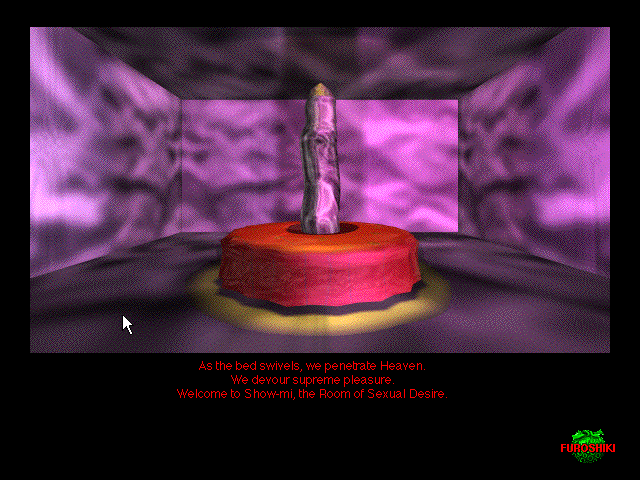
To be expected, the game's conclusion is a visual treat with an over-the-top, fully rendered cinematic that I cannot imagine was cheap to make in 1993 or 1994. Watching the game return to the cheap-looking paper dolls from the start was equally hilarious. The way the game handwaves all of its undeveloped plot threads to put a neat bow on top of your character getting their soul back perfectly captures the game's unevenness from start to finish. Eastern Mind: The Lost Souls of Tong-Nou is a messy video game. However, I honestly can say I enjoyed it more than LSD, and I know that safely puts me in the minority regarding people who have played Sato's works. Something about the game earnestly trying to cover the core religious beliefs of Buddhism in an acid-induced drug trip made me far giddier than whatever I encountered in LSD. Both games have undeniable rough edges, but the fact that Tong-Nou is a far more traditional video game experience means that the pieces inside it that do work have more of an opportunity to shine than the few times when LSD shocked me. So, if you got to the end of this write-up and want to play something that thoroughly earns its reputation as the weirdest adventure game ever made, I recommend you check out Eastern Mind: The Lost Souls of Tong-Nou.
Also, here's an archive of me playing Eastern Mind in a single three hour session:
